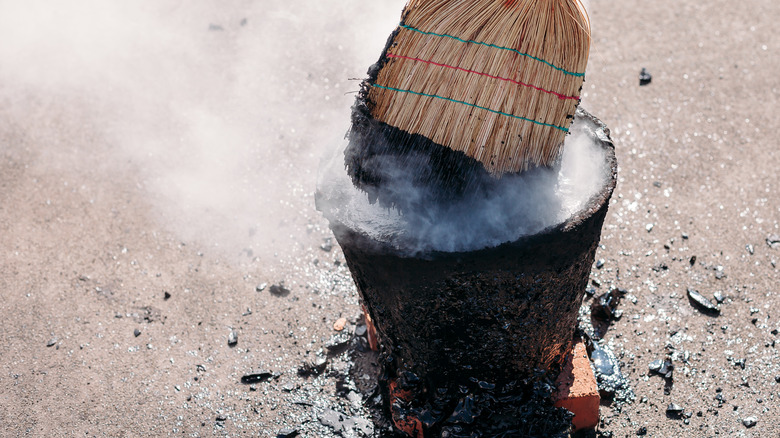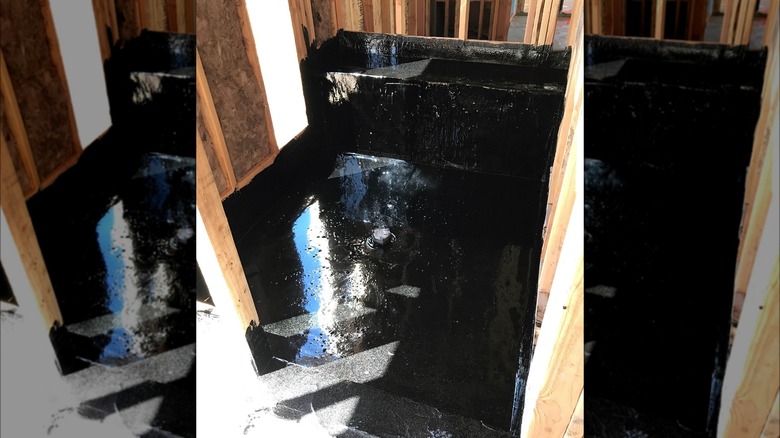The Hot Mopping Trend Jasmine Roth Is All About (And How To Do It In Your House)
When excess moisture is trapped in the walls or floors of a bathroom, it can lead to water damage which manifests in unpleasant odors, mold growth, and even a breakdown in the drywall. Hot mopping is a waterproofing method that helps to combat this, specifically with the floor. It involves applying hot asphalt or tar and other materials to create a shower pan that the tiles are then installed over. In season 4 episode 3 of HGTV's "Help! I Wrecked My House," Jasmine Roth chose this method for a bathroom that held both a shower and an integrated freestanding tub.
The primary benefit of hot mopping is to create a waterproof barrier that will prevent water from seeping into the subfloor. With the tub and shower next to each other with no separating glass, Jasmine Roth knew that the waterproofing would help a lot in protecting the floor. "The shower pan runs all the way over under the tub, almost like a wet room, so when you take a shower, you're not all closed in this tiny, little space. The water can go anywhere within that shower pan," she explained to the homeowners (via Help! I Wrecked My House).
How to do it
The first step of the hot mopping process is to prepare the shower subfloor by laying sheets of felt to act as the base. Then, the asphalt or tar will be heated and melted in a bucket so it can be applied in layers with a mop over the base to create a thick seal. After it cools and cures, it will be ready for the tile or other flooring. Note that this isn't a DIY-friendly technique because it is messy, complex, and labor-intensive, as demonstrated in this YouTube video. We recommend hiring a professional contractor because they'll be experienced enough to handle the hot asphalt and work quickly.
The average cost of installation is around $225 to $500. The contractor you hire may not include the framing and plumbing in the service so you might need to hire a different professional for that or DIY if you're experienced in those areas. After installation, watch out for signs of deterioration as the shower pan gets older, usually around 15 years. It may crack or break, so take notice of any leaks or mold growth at the bottom of the shower and call in a professional to replace it.

